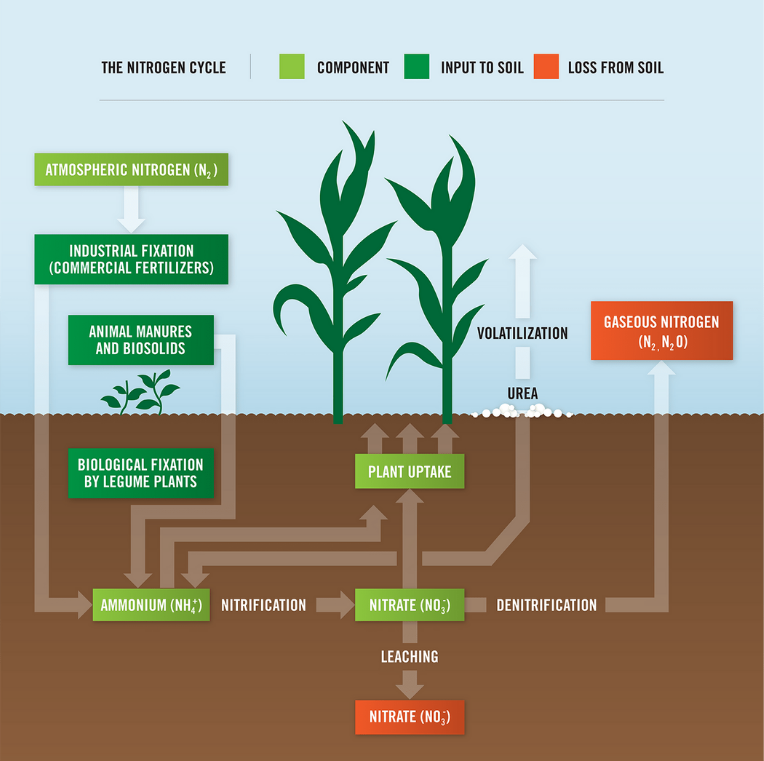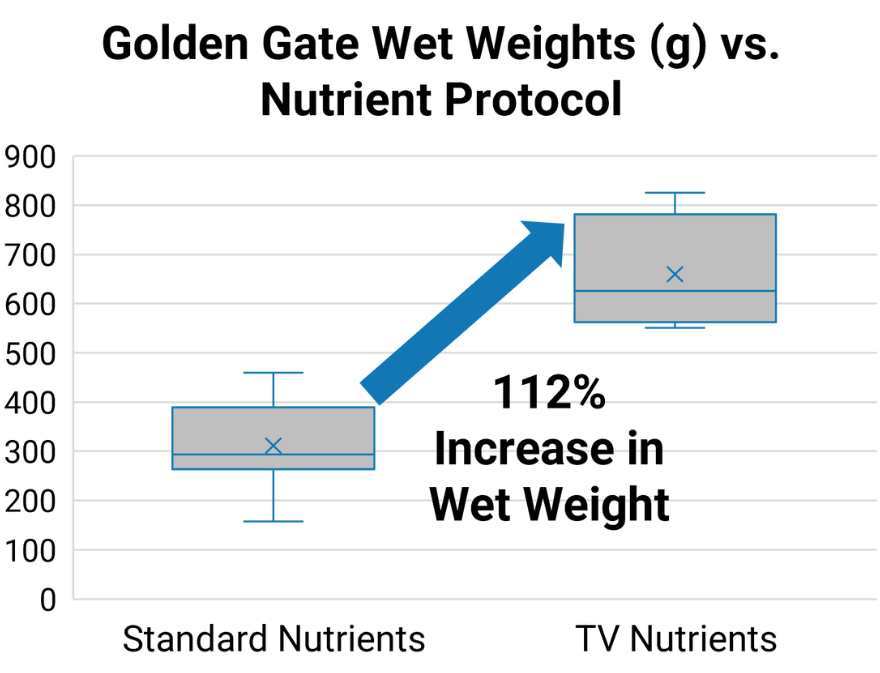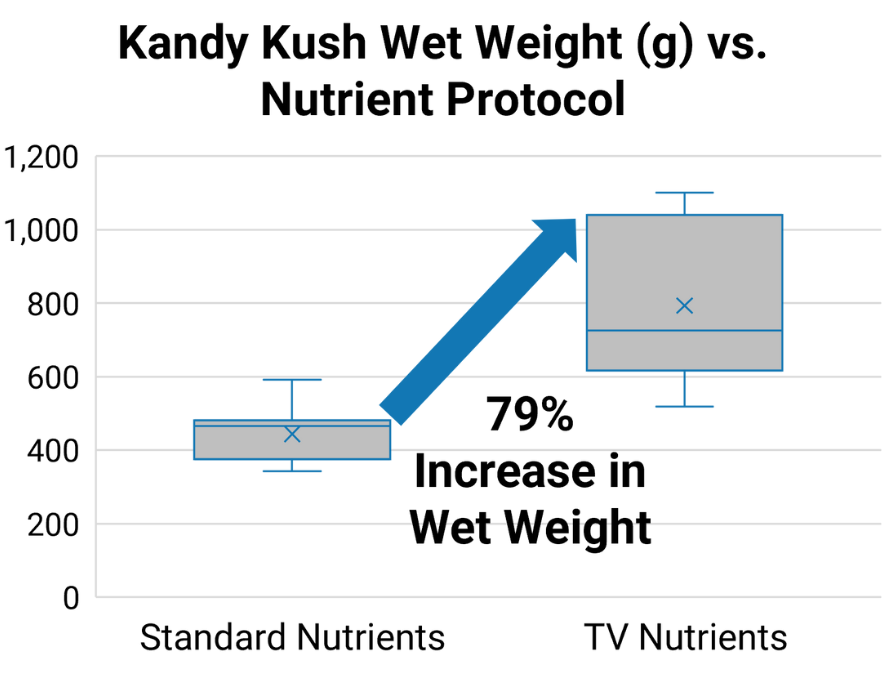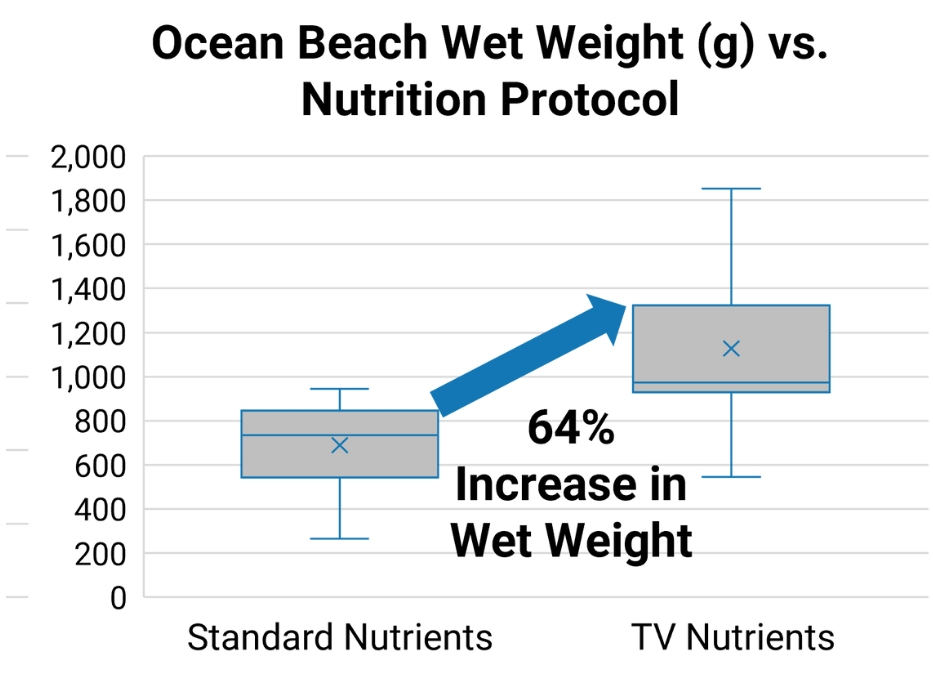Our Food Supply is Dependent on Fertilizers

Fertilizers are key to maintaining the world's crop production and have several benefits.
- Support plant growth: chemical fertilizers contain the primary plant nutrients of nitrogen, potassium, and phosphorous (NPK) in specific ratios that allow for specific growth requirements. These nutrients are critical in areas with depleted soils.
- Predictable and efficient nutrients: nutrient consistency allows for the efficient production of crops on a commercial scale.
- Grow bigger crops fast: providing adequate nutrition in tailored applications allows farmers to keep up with increasing food demand.
- Increase harvest yields: higher yields mean lower productions costs and more affordable food.
- Inexpensive and easy to transport: synthetic fertilizers are cheaper to produce and easier to transport than other organic soil amendments, like animal manure.

But Creating and Using Traditional Fertilizers Is Damaging Our World
Unfortunately, fertilizers also have major disadvantages that have caused farmers to rethink their heavy usage of synthetic fertilizers in the long-term.
- One of the top climate polluting industrial chemicals: production and use of synthetic nitrogen fertilizers account for 2.4% global greenhouse gas emissions. The supply chain is responsible for 21% of annual direct emissions from agriculture.
- May burn people, plants, and the soil: synthetic fertilizers contain high amounts of acidic chemicals, which can burn the skin and negatively impact soil quality.
- Produce toxicity and pollution: excessive nitrogen-rich fertilizers can runoff from farmland into bodies of water, causing toxic algae blooms. Fertilizers can also leach into groundwater.
- Interfere with natural soil ecology and resiliency: fertilizers can stunt the growth of many beneficial soil organisms and can kill others (such as worms and beneficial fungi species) that are crucial for maintaining a long-term healthy soil structure.
The Answer May Be in Naturally Occurring Organic Molecules Found in Our Everyday Foods
There are many advantages to synthetic fertilizers; however, more farmers are attempting to reduce their environmental impact while minimizing production costs and keeping up with food demand. As a result, there's been a growing interest in alternative technologies, including fertilizers powered by amino acids. Amino acids are organic molecules that are environmentally friendly, promote beneficial microbial activity and social fertility, and have increased bioavailability for plants.

What are Amino Acids?
Amino acids are organic molecules that contain the “backbone” elements of life: carbon, oxygen, hydrogen, and nitrogen. When amino acids are linked together by chemical bonds, they form vital proteins responsible for all forms of growth and development in both humans and plants. They have been shown to have critical roles in nutrition, stress responses, and regulating different metabolic processes. Amino acids can be found in the foods we eat every day: eggs, cheese, mushrooms, beans, and meat.
Amino acids are up taken into plants through not only their roots but also through the stoma on their leaves. Foliar feeding of nutrients has shown to not only improve nitrogen uptake efficiency from the soil, but also reduce nitrogen leaching1, 2, 3.

Amino Acids vs. Synthetic Nitrogen Fertilizers
Not all forms of nitrogen can be readily used by the plant. Synthetic fertilizers like calcium nitrate, ammonium phosphate, urea, and ammonium nitrate are simple molecules that require biochemical reactions from plants to be effectively utilized. This means plants spend more energy processing fertilizers that ultimately get converted into amino acids for the plants to use.
By providing plants with amino-acid based fertilizer that are water soluble, key nutrients like nitrogen are readily available to plants and can be immediately absorbed and utilized to promote growth.
Some other advantages of using amino acid fertilizers:
- Water soluble and can be mixed into injector, sprayer, or irrigation system as needed
- Easy and safe to handle
- Free of phytotoxicity
- No salt build-up or soil leaching
- Improved growth and photosynthetic properties
- Active catalyst in metabolic processes
- Chelating agents for better uptake of micronutrients
Uptake Efficiency = Improved Yields and Crop Quality
Amino acid fertilizers are particularly important for cell growth simulation and have shown to be critical in plant nutrition for increasing yields and quality, contributing to more uniform flowering, shortening the productive cycle, and producing better dry material4. Even more promising results occur when foliar spraying amino acid fertilizers, including increased output in tomato plants5 and accumulation of dry matter and chlorophyll in soybean plants6. Amino acids also act as buffers to help maintain favorable pH value within the plant cell, since they contain both acid and basic groups. They are also able to remove ammonia from the cell to protect against ammonia toxicity.
Case Study: Boosting Self-Defense Against Hop Latent Viroid (HLV)
Hop latent viroid (HLV, HLVd, or HpLVd) is a molecular parasite that is infectious in hops, stinging nettle, and cannabis. Unlike viruses, whose genome is encapsulated by a protective layer, viroids are naked RNA. Because they are so simple, they depend on the host plant to allow replication and spread. Studies have shown that viroids can remain infectious for longer than 24 hours on surfaces, several weeks in water, and months to years in dried plant debris and seeds, which means it can easily be asymptomatically spread from infected plants to healthy plants. The most common method to eradicate HLV from a grow once present is to remove the infected plants from the garden, which can be costly for any grower. In cannabis, HLV can severely impact yields and flower quality, leading to 20%+ production loss.
In a large-scale study (>500 plants) across multiple cultivars, HLV infected plants foliarly fed with Terra Vera's IV nutrient line yielded a statistically significant improvement in observed plant health, vigor, and biomass compared to standard nutrient protocols. Wet weight improvements showed up to 112% increase in yield. Similar to humans that are sick, plants stressed with an infection can still yield and express it's full plant profile if fed with fertilizers that have increased bioavailability for easier uptake. For a grower, this type of yield increase could mean millions of dollars of preserved crop value and labor.



- Souri (2016) Souri MK. Aminochelate fertilizers: the new approach to the old problem; a review. Open Agriculture. 2016;1(1):118–123. doi: 10.1515/opag-2016-0016.
- Shafeek et al. (2012) Shafeek MR, Helmy YI, Magda AFS, Nadia MO. Response of onion plants to foliar application of sources and levels of some amino acid: under sandy soil conditions. The Journal of Applied Sciences Research. 2012;8(11):5521–5527.
- Lu et al. (2019) Lu T, Yu H, Li Q, Chai L, Jiang W. Improving plant growth and alleviating photosynthetic inhibition and oxidative stress from low-light stress with exogenous GR24 in tomato (Solanum lycopersicum l.) seedlings. Frontiers in Plant Science. 2019;10:490. doi: 10.3389/fpls.2019.00490.
- Wahba, Motawe & Ibrahim (2015) Wahba HE, Motawe HM, Ibrahim AY. Growth and chemical composition of Urtica pilulifera L. plant as influenced by foliar application of some amino acids. Journal of Materials and Environmental Science. 2015;6(2):499–506.
- Koukounaras, Tsouvaltzis & Siomos (2013) Koukounaras A, Tsouvaltzis P, Siomos AS. Effect of root and foliar application of amino acids on the growth and yield of greenhouse tomato in different fertilization levels. Journal of Food, Agriculture and Environment. 2013;11(2):644–648.
- Abd El-Aal (2018) Abd El-Aal M. Effect of foliar spray with lithovit and amino acids on growth, bioconstituents, anatomical and yield features of soybean plant. Annals of Agricultural Science, Moshtohor. 2018;56(4):187–202. doi: 10.21608/assjm.2018.65137